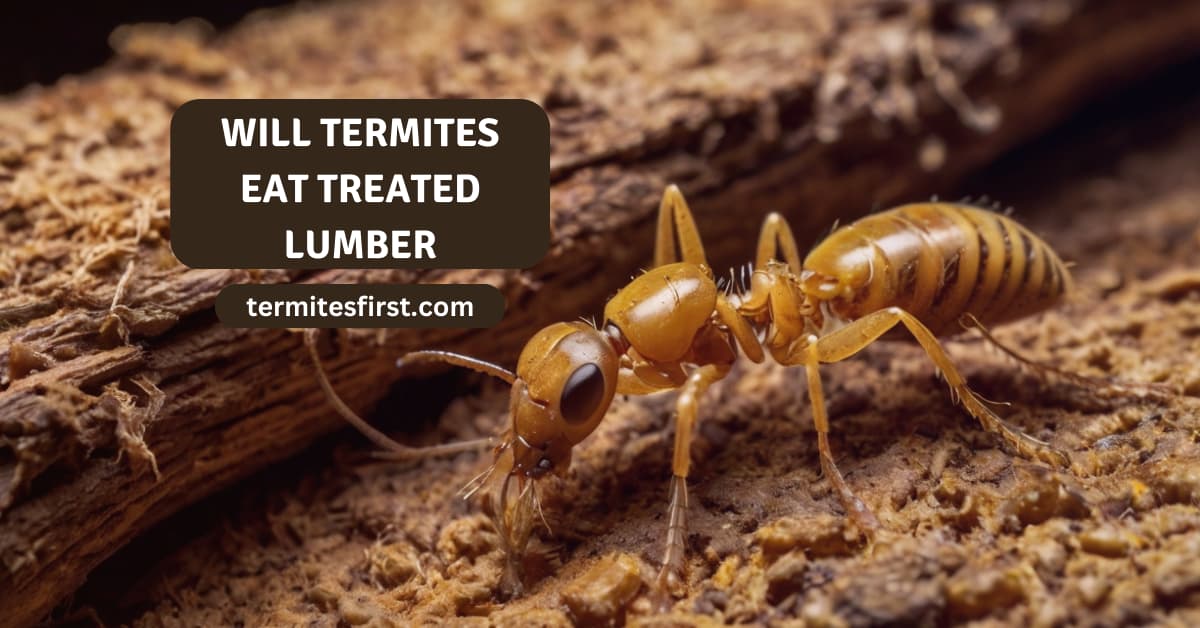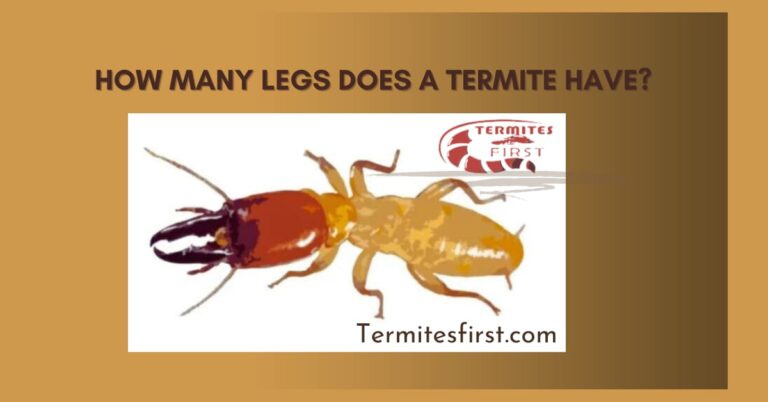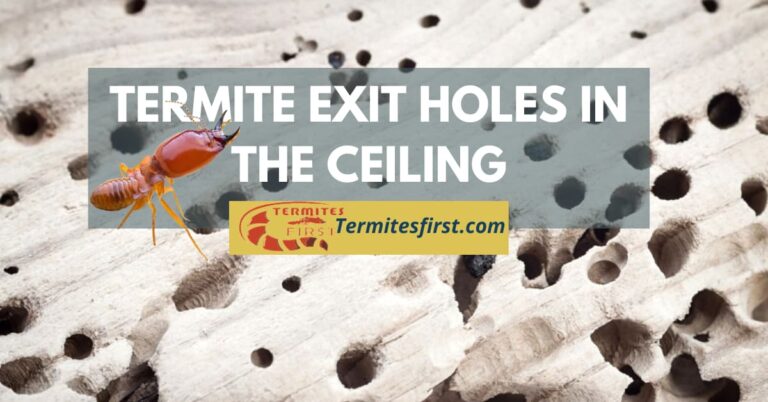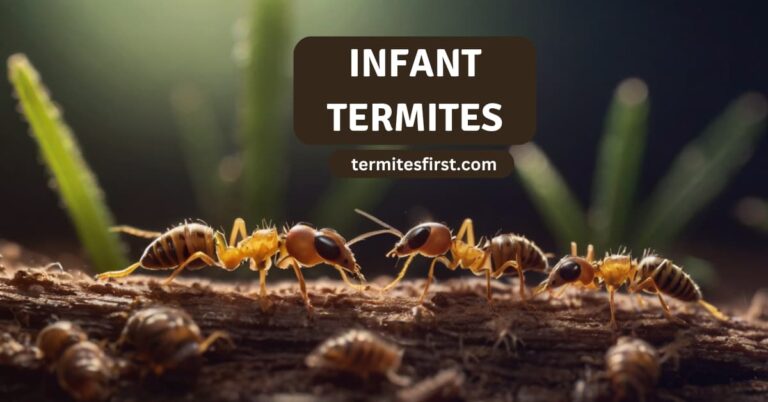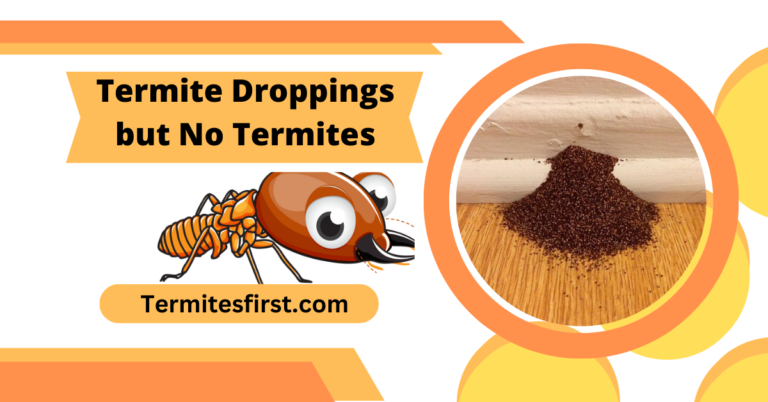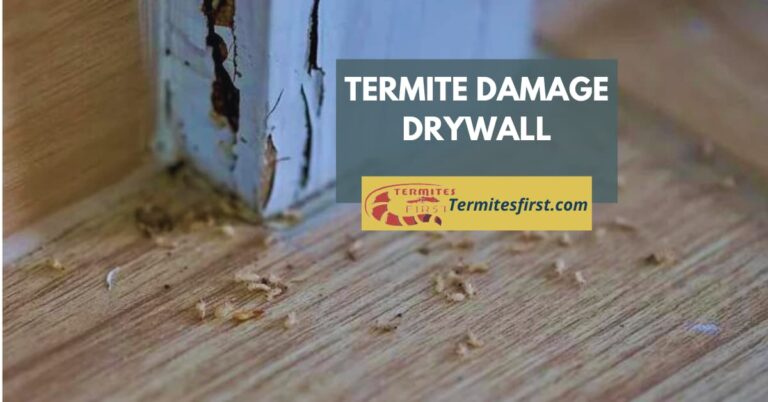Will Termites Eat My Pressure-Treated Lumber?
Knowing whether or not termites will eat treated lumber is key to protecting your home. Treated lumber goes through a process that forces the chemicals inside, making it impervious to termite infestation. The goal of the treatment is to protect wood surfaces from these wood-eating pests, promoting long-lasting durability in the built environment.
Treated wood, while it stops termites, isn’t 100 percent effective. Environmental conditions and a poor treatment job can create vulnerabilities. Understanding these facts allows property owners to take the right steps to protect their home and invest in effective pest control.
Points to be considered:
- Even pressure-treated lumber will eventually succumb to termite infestation if given enough time. Frequent inspections are crucial to ensure it stays protective.
- Chemicals such as copper and borate, which are often introduced into lumber through pressure treatment, are highly effective at keeping termites away. They can leach out, especially in moist environments. This requires knowing the exact environment that the wood will be exposed to.
- Termite-resistant doesn’t mean termite-proof. Even treated lumber will be eaten by termites if it is not regularly maintained, or if it’s exposed to harsh conditions for years.
- Moisture and physical damage significantly impact the longevity and performance of pressure-treated wood. This makes proper installation and regular maintenance all the more critical.
- The most important thing to do is identify signs of termite activity before it’s too late. Listen for hollow-sounding wood and watch for mud tubes to avoid costly destruction.
- Treating wood is only the beginning of termite protection. Adding physical barriers and hiring professional pest control services further strengthens your defense.
What Is Pressure-Treated Lumber
Pressure-treated lumber is a lumber uniquely suited for outdoor use. It goes through a special treatment process that makes it incredibly durable and rot resistant, especially to insect damage such as termites. It isn’t like it’s only a surface treatment. The process drives preservatives deep into the lumber’s cellular structure.
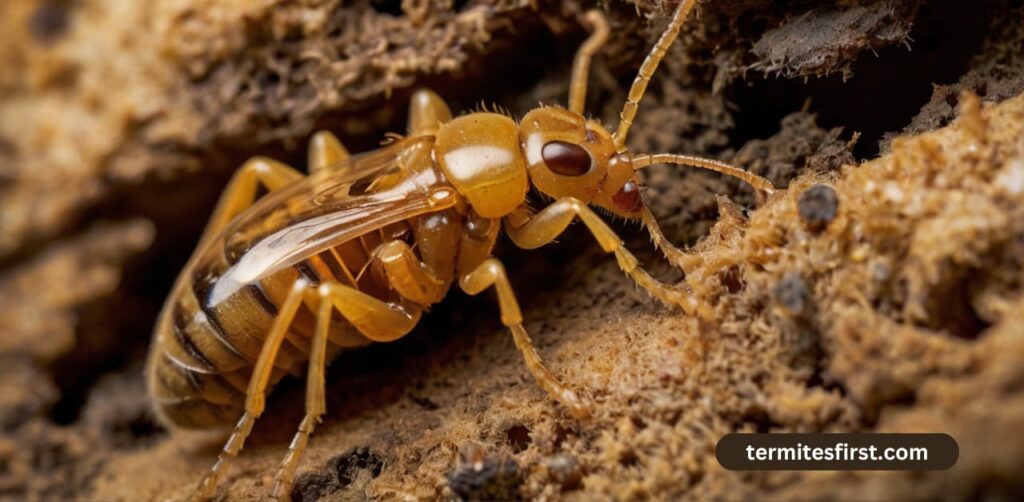
This special treatment allows pressure-treated lumber to be used in many outdoor structures including decks, fences and even playground equipment. By knowing how pressure-treated lumber functions we can better understand its purpose in successful pest management and construction.
The Meaning of Pressure Treatment
Pressure treatment is a process that enhances the resilience of pressure treated wood against the elements. This method replaces traditional wood preservation techniques, utilizing the highest pressure process in the industry to force preservatives deep into the wood for ultimate protection. This innovative approach not only increases durability but also ensures that the wood can resist various threats, including termites and rot.
This process, known as kiln drying, requires submerging the wood in a giant tube where powerful wood preservatives are injected deep into the wood fibers. The penetration of these chemicals is important for deep, long-lasting protection, unlike previous preservation processes.
Builders and landscapers can confidently use pressure treated wood structures for projects like garden beds or outdoor seating areas, as these materials are designed to withstand the elements and insect threats effectively. Such decisions significantly enhance the longevity of outdoor installations compared to untreated timber.
Chemicals Used in Treatment
The chemicals that are typically used to pressure treat lumber today are copper, arsenic, and borate. These chemicals are highly effective at repelling termites and preventing wood rot. Copper acts as a natural fungicide.
At the same time, borate does a great job of preserving wood from fungal decay and insect damage. These chemicals can over time leach out of the wood. Unfortunately, this process typically takes 7 to 10 years, exposing the inner wood to decay.
Take into account the ecological effects of these preservatives. This is particularly key when using treated wood around gardens or where you get your drinking water. Thus, choosing the most appropriate type of chemical treatment is highly based on the application and environmental issues.
Before this change, chromated copper arsenate (CCA) was commonly used by the public for any pressure-treated lumber application. The Environmental Protection Agency (EPA) banned its use in 2003 over significant health risks.
Today, the newer chemicals focus on maximizing effectiveness while ensuring their environmental safety. It’s further important to note that wood, pressure-treated or not, needs to be installed correctly to ensure it performs to its best ability.
Don’t allow wood to come into contact with moist ground. To properly avoid termite damage, ensure that it sits a minimum of six inches above the ground. Period inspections and other termite prevention measures are highly encouraged as well, and further supplement this treatment to provide long-lasting protection against these pests.
Termite-Resistant vs. Termite-Proof
When it comes to understanding the terms termite-resistant and termite-proof, there’s a big difference that matters a lot in construction and home maintenance. First, termite-proof materials are those that termites simply cannot destroy, regardless of the level of attack. Their formula or formulations make them termite-resistant, or even better, termite-proof.
For instance, as mentioned before, trees such as cedar and redwood contain chemicals that make them naturally resistant to termites. These varieties of wood contain natural oils and resins that deter termites from chewing through them. Some wood varieties can be chemically treated in order to improve their resistance properties.
This is critical in regions, like the Southeastern U.S., where termites are a perennial menace. Selecting these durable materials, especially in high-risk areas, is a smarter investment over time.
Termite-Proof
The word “termite-proof” implies complete protection. In virtually every actual scenario, that assertion is seriously overstated. In truth, no wood is truly termite-proof even with the most resistant types because of varying environmental factors that can impact wood’s susceptibility.
Occasionally on the market, products are labeled “termite-proof,” which is a term sometimes used to mislead consumers. Whether they are termite-resistant solutions or not, it’s important to evaluate and monitor any wood structures or materials over time to ensure longevity.
Knowing the difference can make all the difference when selecting materials and products. This new awareness will help you make smarter decisions when building or renovating.
Here are a few prevalent myths surrounding termite-resistant materials. Many people believe that pressure-treated wood is completely immune to termite damage, but this is not necessarily the case. Termites can evolve, and they could eventually find a way to infest even treated wood.
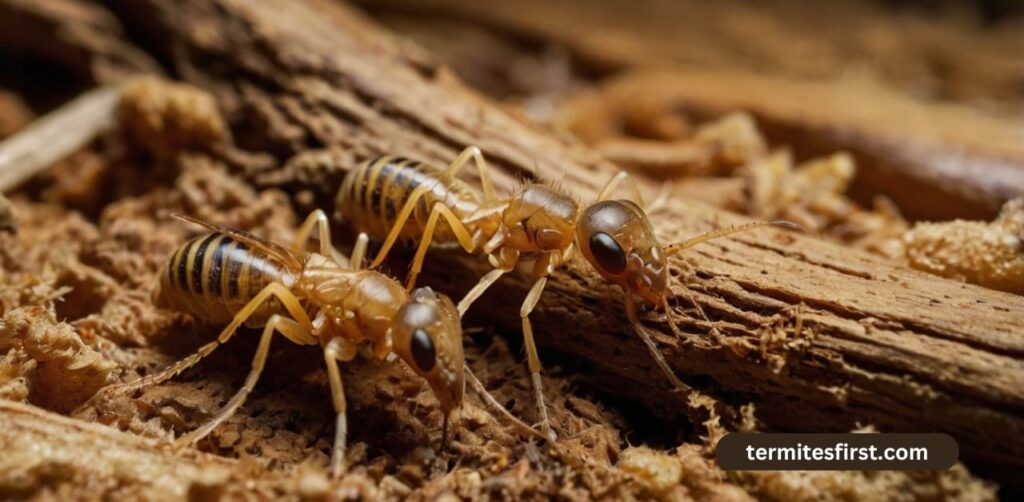
It’s a big assumption that all treated wood protects just as well against termites. For example, pressure-treated wood is technically “termite-resistant,” according to building codes in the U.S., but not “termite-proof.” The chemicals that are used to treat the wood will leach out over a period of approximately 7 to 10 years, reducing their resistance.
That’s because though the outside inch of the wood may remain treated, the inside can become exposed. Any wood regularly in direct contact with soil will eventually rot—treated or untreated wood will be no exception. This creates a perfect condition for termites and carpenter ants to invade the wood.
Except for some specialty applications, most treated wood less than two inches thick is intended for use above ground. It will certainly not hold up as long once it touches the ground. That’s why regular inspections are so important—to identify any infestations before they have a chance to take hold.
Effectiveness Against Termites
1. Resistance to Termite Damage
Pressure-treated wood is one of the strongest defenses against termites, making it an ideal choice for pressure treated wood structures. The initial treatment penetrates the wood with chemicals that prevent termites from eating it, greatly reducing the chances of serious damage. U.S. Construction codes classify this type of wood as “termite-resistant,” indicating its effectiveness in termite prevention.
However, relying solely on lumber treated for termites isn’t sufficient. Proper installation is crucial to maximize resistance. Store firewood, untreated timber, and other wood products away from the ground and your home, as they can quickly become a target for termites if in direct contact with soil.
Moreover, not all treated woods are equal; different types provide varying degrees of resistance. Selecting the appropriate type based on environmental conditions is critical. Regular termite inspections allow you to monitor the health of the wood and act quickly, stopping damage before it escalates into a serious issue.
2. Factors Affecting Longevity
Environmental conditions, especially moisture and humidity, play a huge role in how long treated wood will last. Insecticidal chemicals will leach out more quickly in areas of high moisture, leaving the wood exposed. Damage from the outside, e.g., scratches or blunt trauma, is an additional way to defeat the integrity of the treatment.
Proper ventilation and drainage around all treated wood structures is very important. First, they avoid the build-up of moisture, which can degrade the wood’s natural defenses against termites. Regular maintenance, like sealing and applying UV protective coatings, is important for increasing the longevity of the wood.
These additional practices are what enhance the wood’s ability to remain termite-free for longer periods.
3. What Happens Over Time
With time, the effectiveness of those protective chemicals in treated wood is reduced. Research indicates that these chemicals can leach out in as little as 7 to 10 years, and that this leaching occurs more rapidly in humid environments. As the treatment dissipates, the inner wood becomes vulnerable to termite invasion.
Extended exposure to moisture only compounds the process, making the wood more appealing and hospitable for termites. When wood starts to fail, the risk of infestation increases, so making repairs and replacements quickly is important.
Frequent applications of termiticides around the foundation of a home are a good way to add an extra layer of defense against termites. When you combine treated wood with preventive measures you greatly reduce your risk of a termite infestation. This method provides the strongest long-term protection for the structure itself.
Signs of Termite Infestation
Detecting termite infestations in chemically or otherwise treated wood needs to be thorough and careful. The key is knowing the telltale signs these wood-devouring marauders are known for. Common indicators include:
- Hollow-sounding wood when tapped
- Mud tubes on walls or foundations
- Frass (termite droppings) near wood structures
- Visible damage or tunnels in the wood
Each of these signs gives critical evidence that termites may be lurking, even in chemically treated lumber. The telltale sound of hollowed-out wood is usually a sign that serious damage has been done inside.
At the same time, subterranean termites build mud tubes to reach wood sources above ground. The appearance of frass, which looks like sawdust, around wooden structures is another give-away. Termite tunnels and damage are usually described as having a honeycomb appearance, especially with subterranean termites.
Since this similarity can cause severe damage, recognizing them in the early stages is extremely important.
Identifying Damage in Treated Wood
Looking for signs of damage or decay in treated wood should be done with a careful eye. Consistent, scheduled maintenance inspections will be key to identifying problems sooner rather than later.
Inspect carefully in joints and connections where moisture can build up. These areas are often more susceptible. If moisture infiltrates the wood, it can weaken the wood’s natural resistance, leaving it vulnerable to termite infestation.
Changes in wood color or texture can be other signs of termite damage. Discoloration or softening of the wood can indicate internal decay or infestation. Softwoods like pine and fir are especially susceptible to termite infestations.
Termites are especially attracted to the soft fibers of springwood, which they would often eat, while avoiding harder summerwood. This characteristic feeding habit can lead to splintered wood surfaces and compromised structural integrity.
Recognizing Termite Activity
Active termite presence is often signaled by specific behaviors, such as:
- Swarming during warmer months
- Presence of discarded wings near entry points
- Sounds of clicking or rustling within walls
- Sightings of worker termites or soldier termites
Swarming is the most conspicuous sign, as it involves large numbers of termites leaving their colonies to take to the air. Shed wings around windowsills or doorways are signs that termites have infiltrated the home.
If you have unexplained clicking or rustling noises coming from your walls, you may be dealing with an active termite infestation. These incredibly social pests communicate and work together to eat wood.
A sure sign of infestation is a direct sighting of termites, as worker termites will look pale and soldier termites will have noticeable heads.
Subterranean and drywood termites are the primary threats in the United States, posing a risk to approximately 60% of homes. They frantically search for cellulose, the organic compound in wood, stopping their consumption only if conditions allow them to thrive.
Identifying these signs and behaviors early will protect your home from serious damage and expensive renovation.
Preventing Termite Infestations
One thing I’ve come to realize through the years is that routine inspections are key to preventing termite infestations. By making regular pest control appointments, you can identify any issues before they develop into more serious concerns.
These inspections make the most of a birds-eye view of vulnerable areas, helping make sure that treated wood stays effective in repelling dangerous termite infestations. Surprisingly, although it’s basically useless, the construction codes in the U.S. Accept pressure-treated wood as termite-resistant.
Proactive inspections are essential for identifying early signs of termite presence or destruction, preventing loss of this valuable benefit.
Moisture control is the next most important component. Since termites are attracted to moist areas, avoiding excess moisture near wood structures is key to prevention.
Ensure that water does not collect around the bases of structures. Second, make sure there’s good ventilation so the wood stays dry. Moisture can wash out preservatives in treated wood, compromising its effectiveness within the first 10 years.
Keeping everything dry prolongs the wood’s termite-resistant properties by minimizing leaching and maintaining its protective chemicals.
Here are some additional preventive measures to consider:
- These barriers act as a line of defense, keeping termites from accessing the wood.
- Proper drainage systems to divert water away from structures: By directing water away, you reduce the risk of moisture buildup.
- Firewood can attract termites, so keeping it distant from your house is wise.
- Sealing cracks and crevices in foundations: This prevents termites from finding hidden entryways into your home.
Tips for Maintaining Treated Wood
It’s very important to make sure that treated wood stays dry and well-ventilated to ensure it keeps its protective qualities. This includes using good judgment in placement as well as allowing airflow on all sides of the wood.
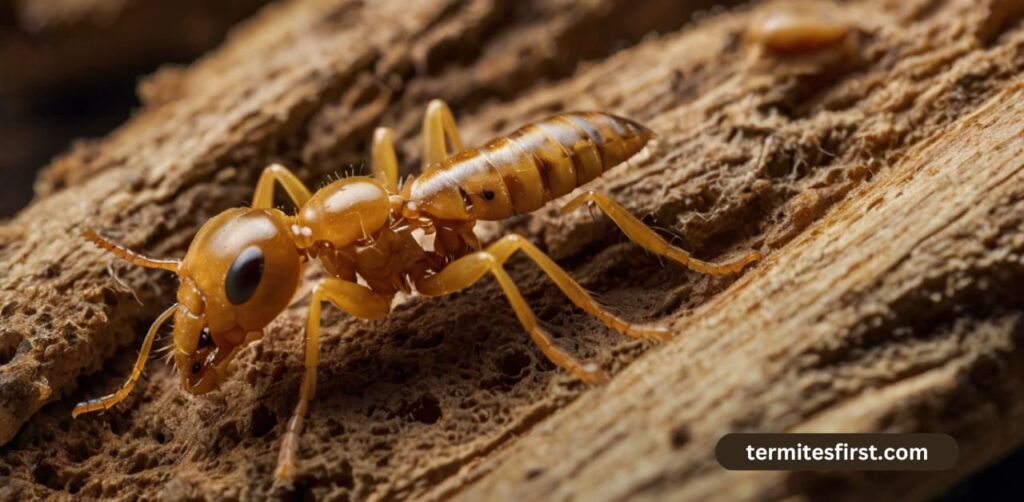
If you have wood that’s not naturally resistant, you’ll have to keep reapplying protective coatings or stains. These layers can deteriorate rapidly, particularly under extreme environmental circumstances.
It’s important to address any signs of damage as soon as you notice them. Prompt repairs keep the wood from deteriorating further and make sure the wood is still an effective barrier to termites.
Here are some maintenance tips:
- Regularly inspect for signs of wear or damage.
- Remove debris from around wood structures to prevent moisture accumulation.
- Ensure proper drainage to prevent pooling water.
- Replace damaged sections promptly to maintain integrity.
Additional Protective Measures
Pairing termite-resistant materials with treated wood provides an additional layer of protection. Materials such as concrete or metal can be used in conjunction with wood structures, making them more resistant to termite infestation.
In addition, professional pest control services give you continuous protection, bringing specialized knowledge and innovative resources to the table to keep termites at bay.
| Measure | Description | Effectiveness |
| Termite-resistant materials | Use materials like concrete alongside wood | High |
| Professional pest control | Regular inspections and treatments | High |
Conclusion
You might be impressed that pressure-treated lumber can provide an effective barrier to termites. It stands mighty because of the chemicals that act to keep these pests away. The truth is, no material is completely termite-proof. Over time, even treated wood is at risk. Remaining vigilant to the risk of an infestation is the best way to stay protected. Routine monitoring and maintenance maximize your lumber’s longevity. When you bring pest control to the table, you add another layer of protection. Learn the characteristics of treated lumber to best shield your environments. By staying one step ahead, you can prevent these harmful pests from invading your home. Well, here’s hoping we’re all educated and attuned enough to make the difference. Join NPMA in discovering more about innovative pest control techniques. This expertise helps protect our homes and environment.
Frequently Asked Questions
Pressure-treated wood is lumber that’s been injected with chemical preservatives to discourage termites and resist decay, insects, and moisture. This treatment greatly increases the longevity of the wood, making it perfect for outdoor applications.
In fact, termites tend to stay away from pressure treated wood structures. The chemical preservative acts as a repellent to discourage termites from eating, but even treated wood is not immune, as these chemicals can leach out, leaving the wood vulnerable.
While termite-resistant wood has properties that can discourage termites, it is not immune. Termite-proof implies a level of assurance that simply does not exist in pressure treated wood structures.
While using pressure treated wood structures is an effective way to deter termites, it is not a foolproof method. Only with proper ongoing maintenance and regular termite inspections can these materials protect your home in the long run.
Signs of a termite infestation include wood that sounds hollow when tapped, mud tubes on walls and other surfaces, and shed wings, making regular termite inspections crucial to discourage termites from causing extensive damage.
Don’t let pressure treated wood come in contact with soil, repair water leaks, and provide proper drainage and ventilation. Performing regular termite inspections and using treated lumber can help you avoid an infestation.

